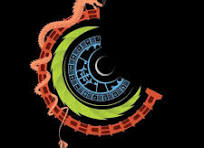● How Urban India Pays: A comprehensive study by Kearney India and Amazon Pay India sheds light on the evolving payment landscape, unveiling 90% of respondents prefer digital payments for online purchases while 50% prefer them for offline purchases
● Small and Big Merchants and Vendors Embrace Digital: UPI, digital wallets, and cards gain widespread traction as cash transactions dwindle, with digital modes making up 69% of merchant transactions; even street vendors cited receiving ~46% of their payments digitally
● Men and women are embracing digital payments equally: Both use digital payments in about 72% of their transactions, indicating gender parity
● Millennials and Gen X Lead the Charge: The research suggests higher overall adoption of digital payment methods by Millennials and Gen X; Boomers have higher card and wallet usage than the younger cohorts
● Digital payments have penetrated small towns: Consumers in small towns highlighted that 65% of their payment transactions are digital, while consumers in larger cities cited this ratio to be ~75%.
● Emergence of New Modes: Emerging modes like BNPL gain visibility as convenience, rewards propel India’s digital payment transformation, with 87% awareness of the credit-based offering among respondents
● Convenience and Innovation drive Penetration: From online purchases to street vendors selling fruits, flowers and everyday items, digital payments make inroads across sectors, driven by convenience cited as the primary motivator by over 60% of respondents.
Mumbai, 9th July 2024: Unveiling India’s accelerated transition towards a cashless economy, Kearney India and Amazon Pay India today released the “How Urban India Pays” report. This comprehensive study, based on a survey spanning 120 cities and over 6,000 consumers and 1,000 merchants, reveals a seismic shift in payment preferences. A staggering 90% of respondents favor digital payments for online purchases, while nearly half (50%) extend this preference to brick-and-mortar stores. Recognizing this paradigm shift, Indian merchants have swiftly adapted, with a substantial 69% of their transactions now conducted through digital channels.
The survey’s expansive reach across diverse regions, income groups, city tiers, age segments, and genders, offers a comprehensive lens into India’s digital payment landscape. The report meticulously maps the adoption patterns of consumers and merchants, uncovering key growth drivers and areas for enhancement. These insights equip stakeholders with a strategic blueprint to fortify security measures, foster inclusivity, and chart a future-ready roadmap for the industry’s continued expansion.
Shashwat Sharma, Partner, Financial Services Lead, Kearney India said, “Our comprehensive research offers a captivating glimpse into India’s digital payment evolution, showing a dramatic shift in consumer and merchant behaviors. From the widespread adoption of digital payments in both online and offline transactions to the rise of emerging payment methods like BNPL, this report provides a detailed look at how India is transforming its payment landscape. We are hoping that this report serves as a valuable resource for stakeholders to navigate and contribute to the dynamic and inclusive digital payment ecosystem in India.”
“India’s digital payment revolution is firing on all cylinders, propelled by consumers and merchants alike,” said Vikas Bansal, CEO, Amazon Pay India. “How Urban India Pays” report is a clarion call, underscoring the urgent need for stakeholders to innovate and collaborate to build an inclusive, secure, and future-proof digital payments ecosystem. With digital transactions penetrating even street vendors and smaller towns, we are at an inflection point. Amazon Pay is committed to being at the vanguard of this transformation, empowering Indians across geographies with seamless access to digital payments. We will continue simplifying lives through frictionless digital experiences that fulfill aspirations and uplift communities, he added.
The digital payment revolution is being spearheaded by India’s millennials (aged 25-43 years) and Gen X (aged 44–59 years). However, the movement transcends age barriers, as even Boomers (60 years and above) are rapidly embracing cards and digital wallets. Remarkably, the adoption exhibits near-perfect gender parity, with both men and women leveraging digital payments in over 70% of transactions. Fueling this seismic shift is the unparalleled convenience of digital payments, cited as the primary motivator by over 60% of respondents for online and offline purchases alike. Speed, efficiency, and lucrative rewards further amplify the appeal, catalyzing widespread adoption.
While UPI reigns supreme with 53% of consumers preferring it for online purchases , digital wallets and cards (credit, debit, and prepaid) are preferred by 30% of consumers. In offline purchases, cash is still predominant with 25% of consumers preferring UPI and 20% of them preferring digital wallets and cards. This multi-pronged digital payment ecosystem is poised for exponential growth, as the report charts a roadmap for stakeholders. Armed with these insights, they can architect a future-proof, inclusive, and ultra-secure digital payments infrastructure that propels India’s cashless revolution to new heights.
This report introduces the Degree of Digital Payment Usage (DDPU), a metric designed to measure the extent of digital payment adoption among various demographic groups. The DDPU uses a multidimensional approach using three foundational pillars: volume (digital transaction frequency), variety (diversity of categories in which digital payment methods are utilized), and openness (awareness and receptiveness toward emerging digital payment methods).
 Newspatrolling.com News cum Content Syndication Portal Online
Newspatrolling.com News cum Content Syndication Portal Online







